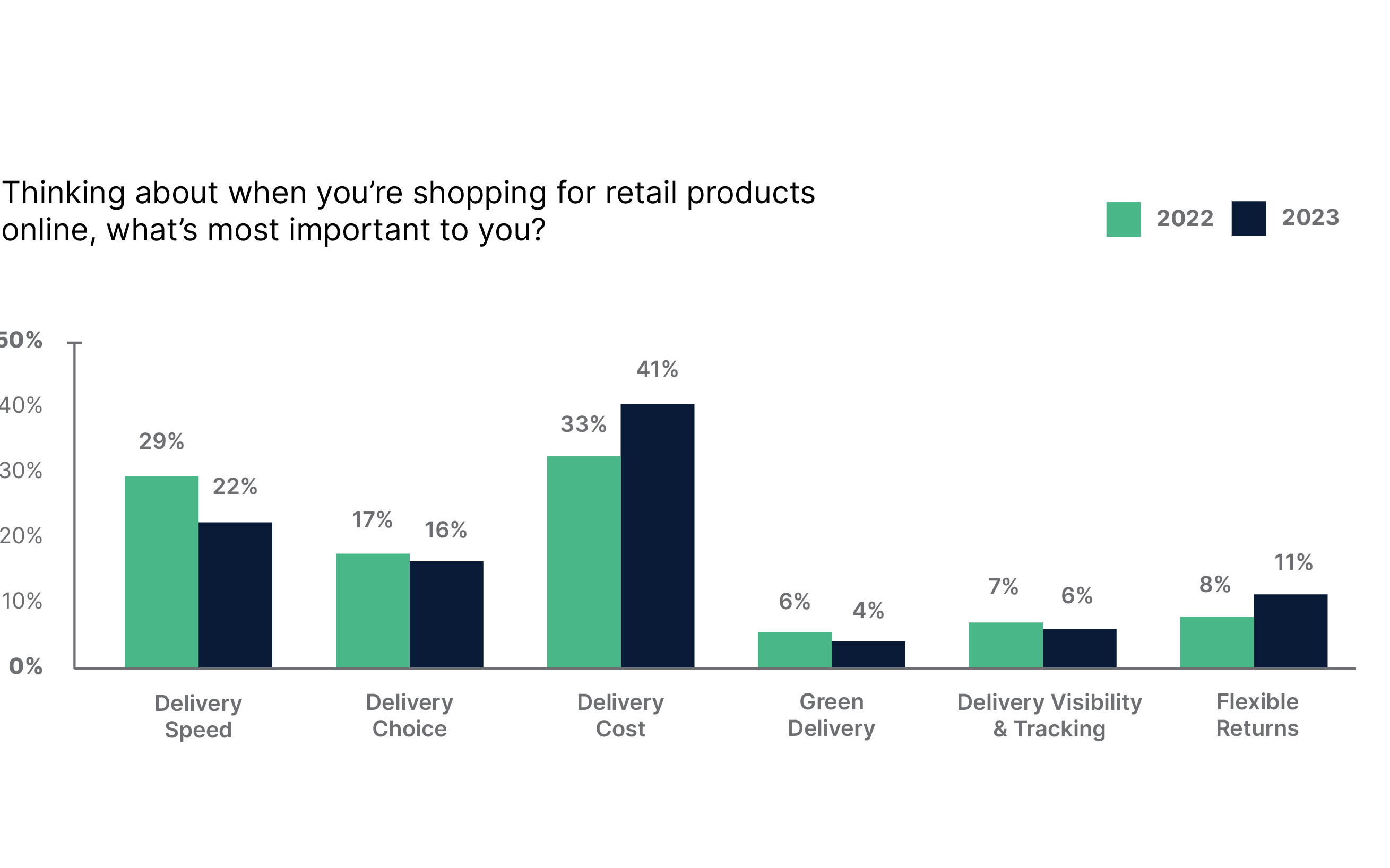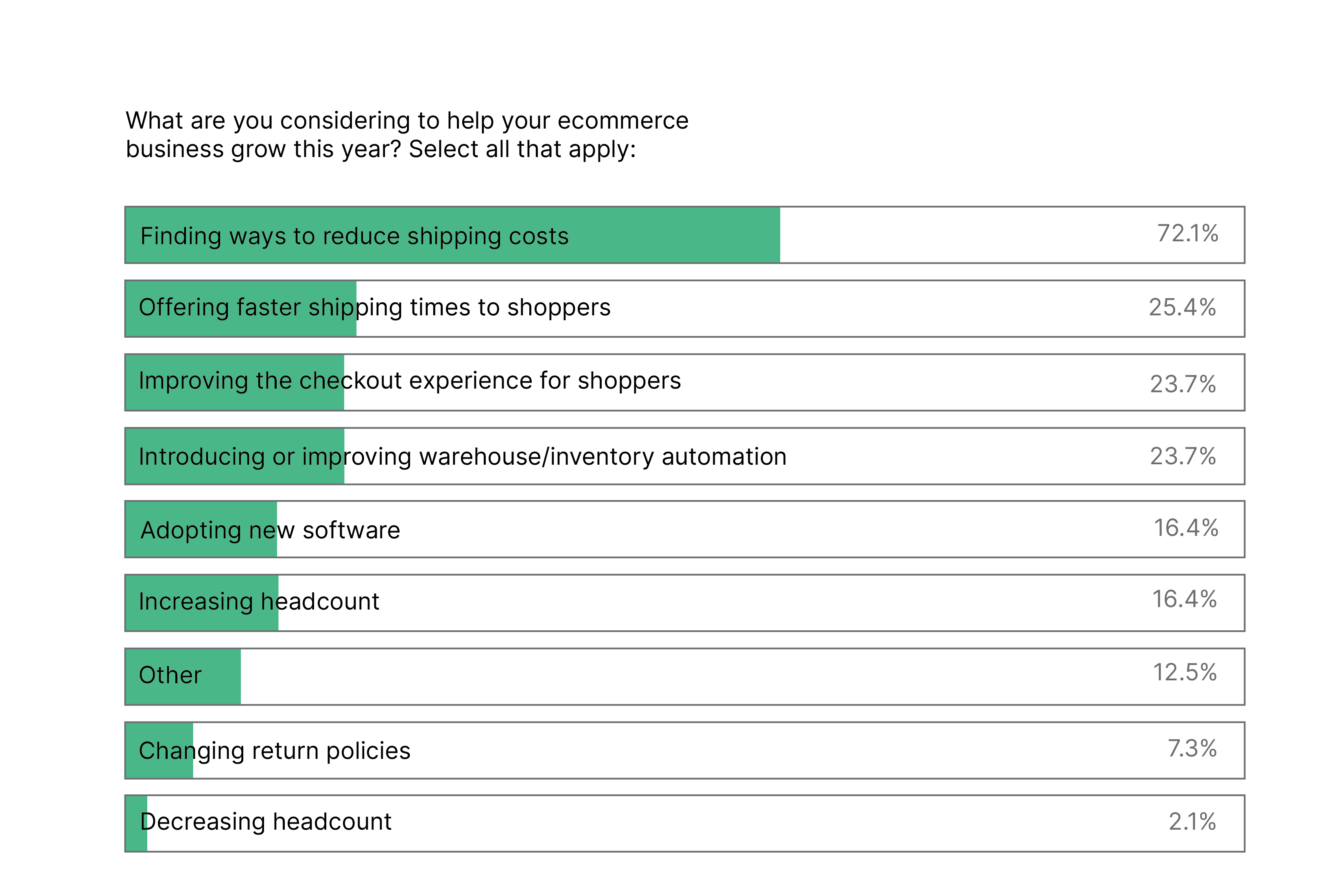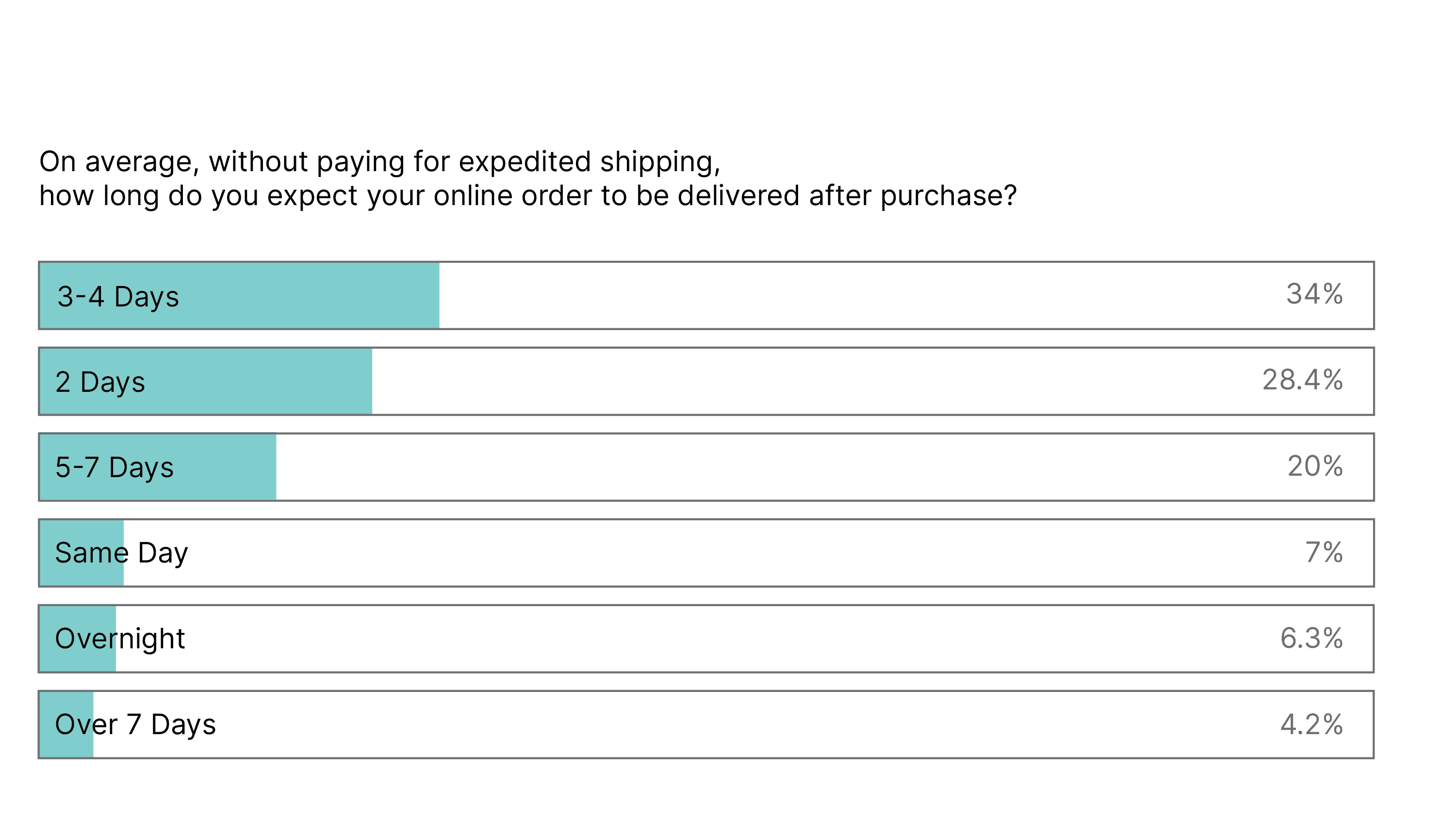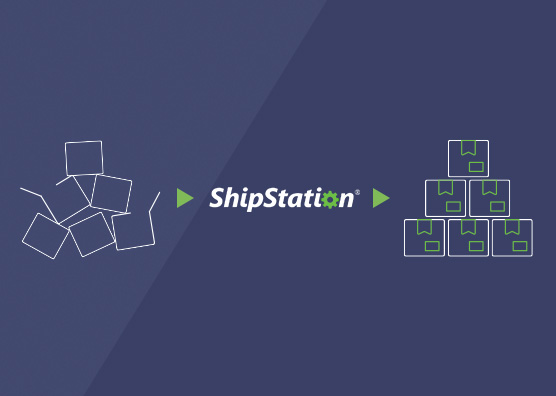A noticeable change compared to 2022 is that, in 2023, consumers increasingly prefer free, standard delivery over fast shipping. As delivery speeds stabilize from where they were over the past couple of years, shoppers are willing to wait a few days for delivery. However, inflation is still the name of the game. This plays a key factor in the demand for free shipping. The consumer mentality seems to be that since items are in stock, it’s fine for their packages to take a few days to arrive.
Consumers Care About Shipping Costs
There are many factors at play when someone clicks buy. One that wields a lot of buying power is shipping cost. Shipping costs are the biggest delivery factor for where people shop. Our study found that 61% of consumers are less likely to shop with a brand if their delivery fees are too high.

Delivery cost ranks #1 for delivery importance. It has risen significantly since last year—up to 41% in 2023. This is up from 33% last year. A preferable delivery cost was twice as popular as a quicker delivery speed. Even more surprising is that delivery cost is many times more popular than other factors like flexible returns or green delivery. It also towers over delivery visibility & tracking. Though, in 2023, it’s pretty much understood that a seller offers tracking.

“Don’t let shipping costs be a surprise! If someone is finding out that there is a shipping fee after they’ve already entered their shipping and billing info, that’s an almost guaranteed abandonment. If your shipping isn’t free (or it is but only over a certain threshold), display that earlier in the journey via a banner.”
Shipping Costs Matter to Merchants, Too
It’s not only consumers who care about shipping costs. Merchants want to keep costs low, too. In fact, when presented with a few options for how they’d like to grow their business in 2023, 72% of US merchants put their vote behind cutting shipping costs. Shipping costs may be a necessary part of running an ecommerce business, but label costs can eat into profit margins. And finding the right balance can make it hard to stay competitive and remain profitable. And while customers show a willingness to shop with smaller retailers, they still expect free delivery options. As a result, merchants also shop around for the lowest shipping rates.

Label Cost Influences Which Carriers Merchants Use
When choosing carriers, 68% of merchants say shipping rates are the biggest deciding factor. If a merchant can find lower shipping rates, they can pass the savings along to their customers. Another reason cost also plays such a large factor in choosing a carrier is that the major US carriers deliver packages within the time frame consumers expect. So, as long as you have access to shipping discounts, you and your customers will both be happy.
The great news for merchants is that ShipStation provides substantial shipping discounts regardless of your shipping volume. These discounts, up to 89% off retail rates, help you remain competitive amongst even your largest rival. The added bonus is that many of the features your warehouse needs to provide top-notch delivery are also included by ShipStation. There are more ways to save than cutting costs on label fees. For instance, automating and streamlining fulfillment helps businesses save money. And while cheaper labels are important, streamlined fulfillment improves delivery time and reduces the workday by a few hours. After all, time equals money!

If you can’t offer free shipping to every customer, loyalty programs are an excellent way to ease the pain of shipping costs. For instance, during the checkout process, you can offer discounted or expedited shipping for those that sign up — and continue providing even more reward options, like birthday gifts, early access and other perks that can encourage repeat purchases.”
Delivery Speed is a Big Deciding Factor for Customers
While delivery prices influence your customers, speed does matter. It follows behind cost as the second most important delivery factor. Delivery cost has seen an increase in importance over the past year while delivery speed has actually decreased in importance since 2022. As supply chain disruptions fade, it’s easier for retailers to provide stable delivery estimates to customers. So, it’s likely that concerns about shipping delays and items being out of stock have fallen from consumers’ minds.
Two-day delivery is less of a draw than it used to be. Instead, the expectation is that a parcel should arrive within 3–4 days after placing an order. Thankfully, there is a wide range of affordable ground shipping options that deliver within this timeframe.

Green Delivery Can Balance Delivery Speed and Cost
Shoppers are more environmentally conscious than ever. Similar to shopping locally, 66% of consumers think globally by wanting to find greener delivery options. Furthermore, 49% of consumers are willing to use a slower delivery option if it’s communicated as more sustainable than another service.
Customers’ willingness for slower delivery provides merchants with an opportunity to position standard, ground options as the green alternative to costly air delivery. Air delivery produces far more emissions than ground delivery. Marketing your standard delivery option as “green shipping” can be eye-catching and make customers go through with their checkout. Of course, there are ways to make ground delivery actually green. You can do your part in the fight against climate change by adding a small carbon-neutral option for only $0.05–$0.20 per label (depending on the carrier and service).
3 Sustainability Tips by noissue
Use circular materials wherever you can: Circular materials include products that are compostable, recyclable, and/or reusable. They ensure that when the package comes to the end of its life (the end customer has opened it) it can be composted, recycled, or reused.
Focus on functionality and efficiency: No one likes to receive packaging that is too big for the product, or uses too much packaging! So try and make your packaging functional and efficient. This practice is also a great one for saving cost on extra shipping size and weight fees.
Be the example and educate your customers: Integrating sustainable packaging into your operations provides an opportunity for you to be an example to the rest of your industry. Make sure to explain these products to your customers, both the circular materials, but also why it’s important to your brand to make the shift.
Josh Bowden
CEO & Co-founder, noissue
